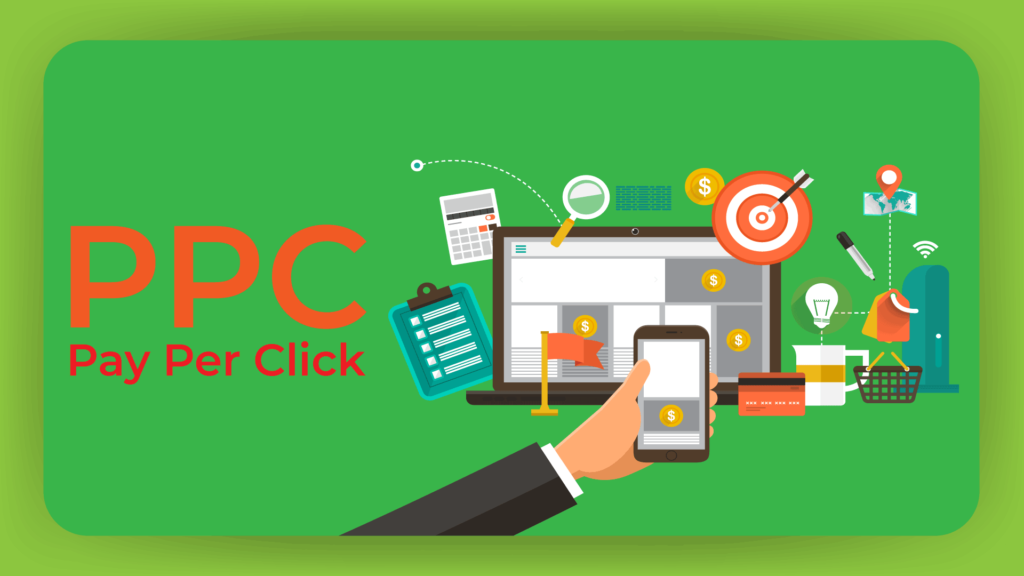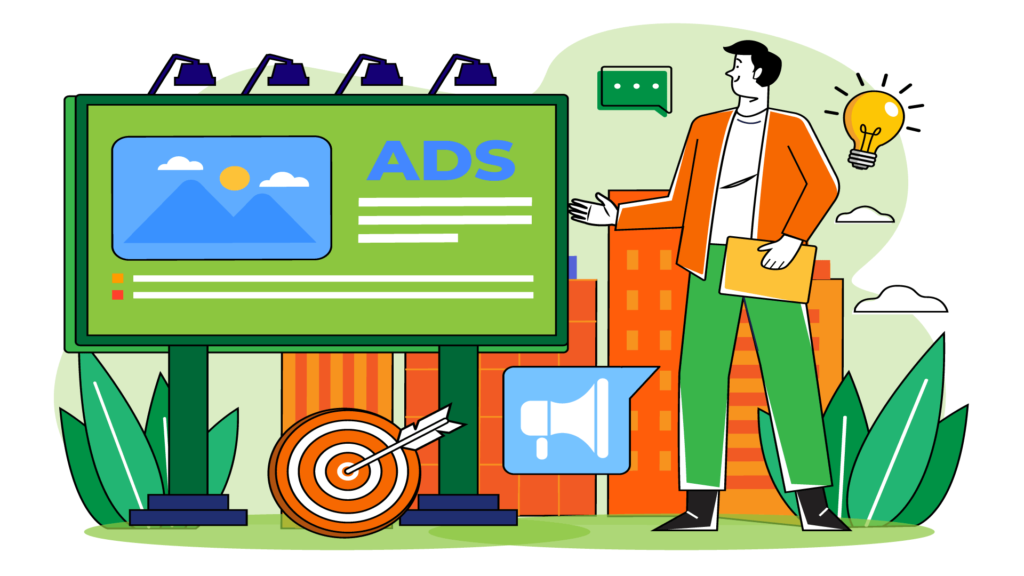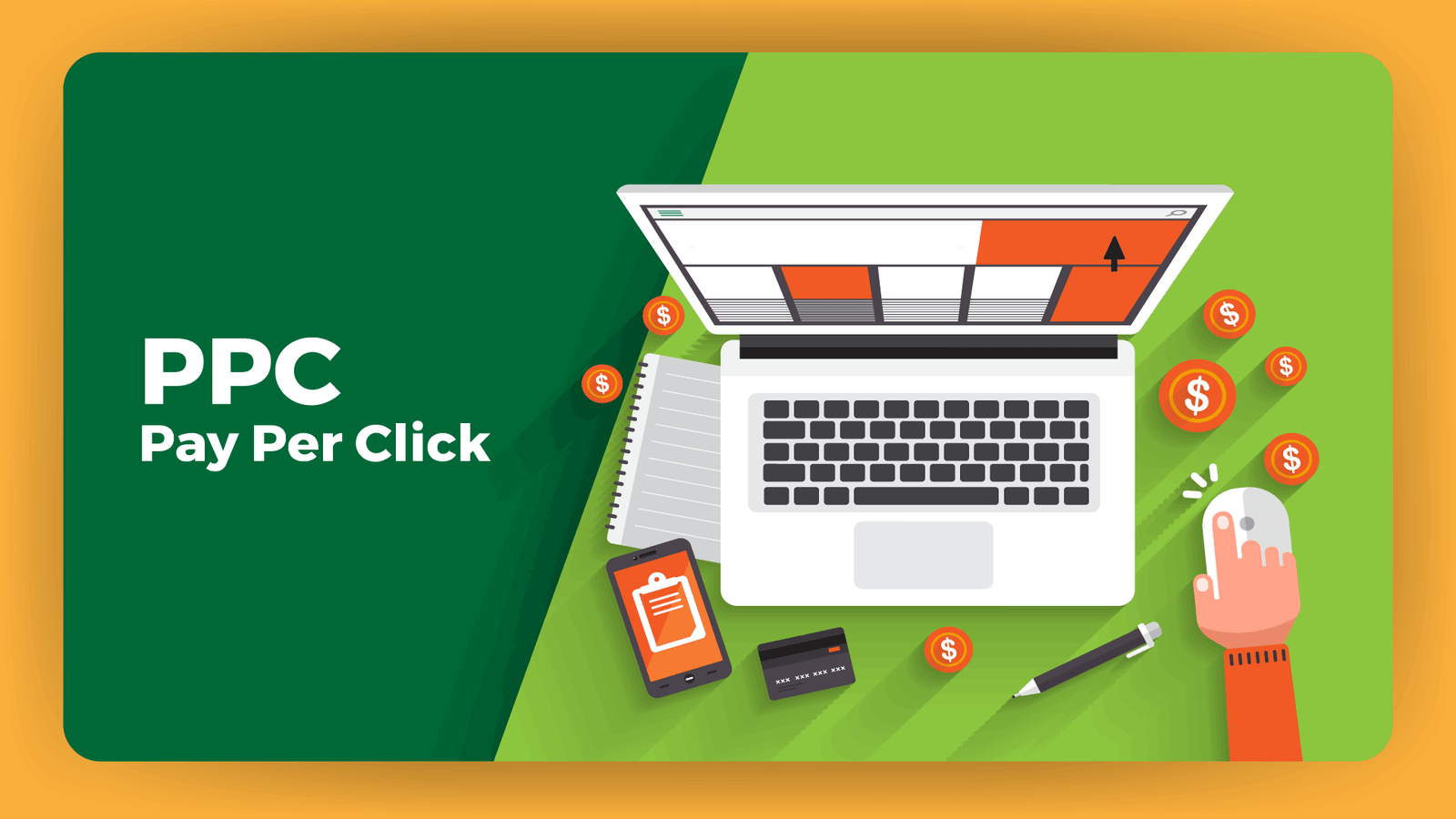
What is PPC in marketing? PPC stands for pay-per-click advertising, is a powerful digital marketing strategy that helps businesses drive targeted traffic to their websites. Unlike traditional advertising methods where you pay a fixed amount regardless of the results, with PPC advertising, you only pay when someone clicks on your ad. This makes it a cost-effective way to reach potential customers and drive conversions.
PPC marketing can help attract new customers and grow your business. By making your brand visible to specific audiences and taking them to high-value pages that support your business goals.
PPC advertising allows businesses to create targeted ads that appear on search engine results pages, social media platforms, and other websites. By targeting specific keywords and demographics, businesses can ensure that their ads are shown to the right audience at the right time.
One of the key benefits of PPC advertising is its ability to provide measurable results. By tracking metrics such as clicks, conversions, and ROI, businesses can easily assess the performance of their campaigns and make data-driven decisions to optimize their advertising strategy.
In the competitive landscape of digital marketing, what is PPC advertising offers businesses a way to stand out and reach their target audience effectively. Whether you’re looking to increase brand awareness, drive website traffic, or boost sales, PPC advertising can be a valuable tool in unlocking business growth.
PPC vs. SEO
PPC (Pay-Per-Click) advertising and SEO (Search Engine Optimization) are two essential components of a successful digital marketing strategy. While both methods can drive traffic to your website, they work in different ways and offer distinct advantages.
What is PPC in search engines? PPC advertising allows you to place ads on search engines or other platforms and pay a fee each time your ad is clicked. This provides immediate visibility for your business and allows you to target specific keywords, demographics, and interests. With PPC, you have full control over your ad campaign, including budget, ad copy, and targeting options.
On the other hand, SEO focuses on optimizing your website to improve its organic search engine rankings. While SEO requires time and effort to see results, it can provide long-term benefits by driving consistent, high-quality traffic to your site without the ongoing costs associated with PPC advertising. SEO also helps establish your website’s authority and credibility in the eyes of search engines and users.
In conclusion, PPC advertising is a great way to quickly drive traffic and generate leads for businesses like digital marketing templates agencies, while SEO is essential for building a strong online presence and attracting organic traffic over the long term. A successful digital marketing strategy often combines both PPC and SEO tactics to maximize results and achieve business success.
KEY COMPONENTS OF PPC ADVERTISING
PPC advertising, or pay-per-click advertising, is a powerful tool for businesses looking to boost their online presence and drive targeted traffic to their websites from search marketing. At its core, PPC advertising is a form of online advertising where advertisers only pay when a user clicks on their ad. This model allows businesses to reach potential customers at the moment they are actively searching for products or services, making it a highly effective way to generate leads and increase sales.
One of the key components of PPC advertising is choosing the right keywords to target. Keywords are the terms or phrases that users type into search engines when looking for information or products. By selecting relevant keywords that align with your business offerings, you can ensure that your ads are shown to users who are likely to be interested in what you have to offer.
Keywords are the foundation of any PPC campaign as they help determine when and where your ads will appear. It’s essential to select relevant keywords that align with your business goals and target audience.
In addition to keyword selection, another important aspect of PPC advertising is creating compelling ad copy that entices users to click. Your ad copy should be clear, concise, and persuasive, highlighting the unique selling points of your products or services and encouraging users to take action.
Ad extensions enhance your ads by providing additional information such as location, phone number, links to specific pages, and more. These extensions can improve click-through rates and user engagement.
Landing pages are where users land after clicking on your ad, and they should be optimized for conversions. A well-designed landing page should be relevant to the ad, easy to navigate, and have a clear call-to-action to encourage users to take the desired action.
Lastly, conversion tracking is essential for measuring the success of your PPC campaigns. By tracking conversions, you can determine which ads are driving valuable actions such as purchases, form submissions, or phone calls. This data allows you to optimize your campaigns for better performance and ROI.
Understanding and optimizing these key components of Google PPC ads can help you create effective and successful advertising campaigns that drive business growth and success. By mastering the fundamentals of keyword targeting, ad creation, and campaign optimization, businesses can unlock the full potential of PPC advertising and see significant returns on their investment.
What is PPC 101: Choosing the Right Keywords for Your Ads
Choosing the right keywords for your PPC ads is crucial for the success of your advertising campaigns. Keywords are the foundation of your PPC strategy, as they determine when and where your ads will appear. It’s essential to conduct thorough keyword research to identify the most relevant and high-performing keywords for your business.
Start by brainstorming a list of keywords that are directly related to your products or services. Put yourself in the shoes of your target audience and think about the terms they would use to search for your offerings. Consider using keyword research tools such as Google Keyword Planner, SEMrush, or Ahrefs to expand your list and uncover new keyword opportunities.
When selecting keywords, focus on relevance, search volume, and competition. Choose keywords that are highly relevant to your business and have a sufficient search volume to drive traffic to your website. At the same time, be mindful of the competition level for each keyword, as highly competitive keywords may drive up the cost of your PPC campaigns.
Additionally, consider using a mix of broad match, phrase match, and exact match keywords to reach a broader audience while ensuring that your ads are triggered by highly relevant search queries. Regularly monitor and optimize your keyword list based on performance data to refine your targeting and maximize the effectiveness of your PPC ads. By choosing the right keywords for your ads, you can enhance the visibility of your business, attract qualified leads, and drive growth through PPC advertising.
What is PPC 101: Creating Compelling Ad Copy
Creating compelling ad copy is essential in PPC advertising as it is the first impression you make on potential customers. Your ad copy should be concise, persuasive, and relevant to the keywords you are targeting.
Start by understanding your target audience and what resonates with them. Highlight the unique selling points of your product or service and make sure to include a strong call to action that prompts users to take action, whether it’s to make a purchase, sign up for a newsletter, or request more information.
Utilize ad extensions to provide additional information and stand out from the competition. Use power words that evoke emotion and create a sense of urgency to encourage users to click on your ad.
Testing different variations of ad copy is crucial to optimize your campaigns. A/B testing can help you determine which messaging resonates best with your audience and drives the most conversions. By continuously refining and improving your ad copy, you can maximize the effectiveness of your PPC campaigns and unlock business growth.
What is PPC 101: Designing Effective Landing Pages
Designing effective landing pages is crucial for the success of your PPC advertising campaigns. A well-crafted landing page can make all the difference in converting a visitor into a customer. When someone clicks on your ad, they should be directed to a landing page that is relevant, engaging, and optimized for conversions.
Start by ensuring that your landing page has a clear and compelling headline that matches the ad they clicked on. This helps create a seamless transition and reassures the visitor that they are in the right place. Use concise and persuasive copy to highlight the benefits of your product or service and include a strong call-to-action to encourage them to take the next step.
In terms of design, keep your landing page clean, visually appealing, and easy to navigate. Use high-quality images or videos to showcase your product or service and build trust with your audience. Consider incorporating social proof, such as customer testimonials or reviews, to further establish credibility.
It’s also important to optimize your landing page for performance. Make sure it loads quickly, is mobile-responsive, and includes relevant keywords for SEO purposes. Testing different elements, such as headlines, images, and call-to-action buttons, can help you identify what resonates best with your audience and improve your conversion rates.
By investing time and effort into designing effective landing pages, you can maximize the impact of your PPC advertising campaigns and drive business growth.
What is PPC 101: Optimizing Your PPC Campaign for Success
Optimizing your PPC campaign is crucial to ensure its success and maximize your return on investment. One key aspect of optimization is conducting thorough keyword research to target the most relevant and high-converting keywords for your business. By identifying the right keywords, you can attract qualified leads to your website and increase the likelihood of conversions.
Another important optimization strategy is creating compelling ad copy that is both engaging and relevant to your target audience. Your ad copy should highlight the unique selling points of your products or services and provide a clear call-to-action to encourage users to click on your ads.
Additionally, optimizing your landing pages is essential to ensure a seamless user experience and improve conversion rates. Make sure your landing pages are relevant to the ad content and provide valuable information to visitors. A well-designed landing page with a clear call-to-action can significantly increase the chances of converting clicks into sales or leads.
Furthermore, continuously monitoring and analyzing the performance of your PPC campaign is essential for optimization. By tracking key metrics such as click-through rates, conversion rates, and cost per conversion, you can identify areas for improvement and make data-driven decisions to optimize your campaign for better results.
In conclusion, optimizing your PPC campaign involves a combination of keyword research, ad copy optimization, landing page optimization, and performance monitoring. By implementing these strategies effectively, you can unlock the full potential of your PPC advertising and drive business growth.
What is PPC 101: Tracking and Measuring Your PPC Campaign Performance
Tracking and measuring the performance of your PPC campaigns is crucial for unlocking business growth. By analyzing key metrics, you can gain valuable insights into the effectiveness of your advertising efforts and make data-driven decisions to optimize your campaigns.
One of the first steps in tracking PPC campaign performance is setting up conversion tracking. This allows you to attribute specific actions, such as form submissions or purchases, to your PPC ads. By tracking conversions, you can determine which campaigns are driving the most valuable results for your business.
In addition to conversion tracking, it’s important to monitor other key metrics such as click-through rate (CTR), cost per click (CPC), and return on ad spend (ROAS). These metrics provide valuable information on the performance of your ads, helping you understand what is working well and where there is room for improvement.
Utilizing tools like Google Analytics and the ad platform’s own reporting tools can provide you with detailed insights into your campaign performance. By regularly analyzing these metrics and making data-driven adjustments to your campaigns, you can maximize the effectiveness of your PPC advertising and drive business growth.
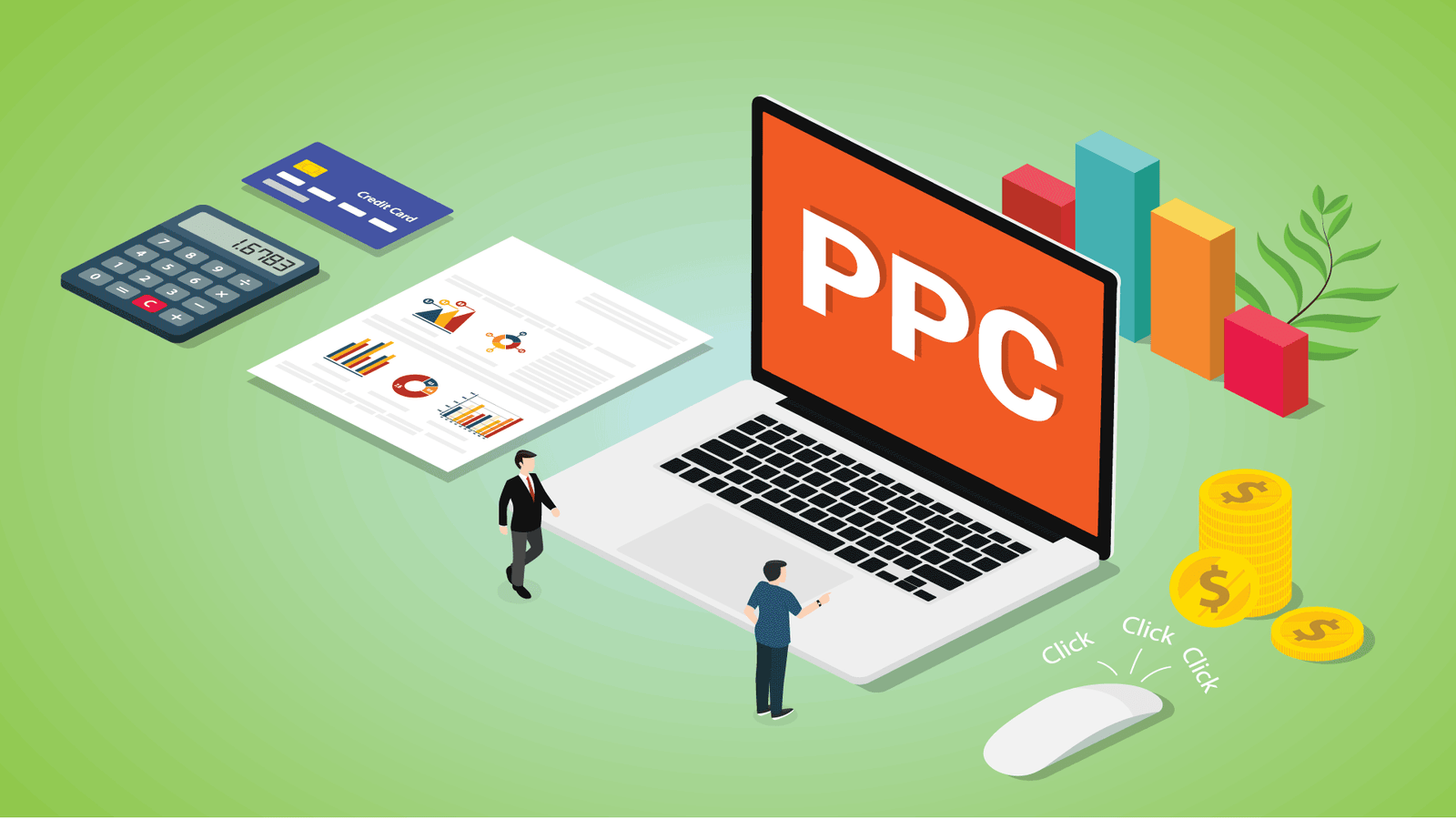
SETTING UP YOUR FIRST PPC CAMPAIGN
Setting up your first PPC campaign can be an exciting yet daunting task for any business looking to harness the power of paid advertising. The key to a successful PPC campaign lies in meticulous planning and strategic execution.
Before diving headfirst into the world of what is PPC marketing, it is crucial to define your campaign objectives and target audience. Clearly outlining your goals will help steer your campaign in the right direction and ensure that your advertising efforts are aligned with your overall business objectives.
Next, conduct thorough keyword research to identify relevant search terms that your target audience is likely to use when searching for products or services similar to yours. Selecting the right keywords will not only help drive qualified traffic to your website but also maximize your return on investment.
Once you have identified your target keywords, it’s time to craft compelling ad copy that will entice users to click on your ads. Your ad copy should be concise, engaging, and relevant to the search query to improve your ad’s click-through rate.
Lastly, don’t forget to set a budget for your PPC campaign and continuously monitor and optimize your ads to ensure maximum performance. Testing different ad variations, adjusting bids, and analyzing performance metrics will help you fine-tune your campaign for optimal results.
By following these steps and staying proactive in managing your PPC campaign, you can unlock the full potential of PPC advertising and drive significant business growth for your brand.
Best Pay-Per-Click Platforms
What is PPC platform? When it comes to unlocking business success through PPC advertising, choosing the right platform is crucial. There are several top-tier Pay-Per-Click platforms available that can help you reach your target audience effectively.
Google Ads, formerly known as Google AdWords, is the most popular PPC platform, offering extensive reach and targeting options. With Google Ads, you can display your ads on Google search results, partner websites, and YouTube, reaching a vast audience across various channels.
Another powerful what is PPC platform is Microsoft Advertising, which allows you to run ads on Bing search results and partner sites, offering a valuable alternative to Google Ads.
Social media platforms like Facebook Ads and Instagram Ads are also excellent choices for PPC advertising, providing highly targeted options based on user demographics and interests.
Additionally, platforms like LinkedIn Ads and Twitter Ads cater to specific business-to-business (B2B) and professional audiences. By leveraging the best Pay-Per-Click platforms according to your target audience and advertising goals, you can maximize the impact of your PPC campaigns and drive business growth.
Types of PPC Ads
PPC advertising is a powerful tool for businesses to reach their target audience and drive conversions. There are several types of PPC ads that you can utilize to maximize your advertising efforts.
Search ads are one of the most common types of PPC ads, appearing at the top of search engine results pages when users search for specific keywords related to your business.
Display ads, on the other hand, are visual ads that appear on websites within the Google Display Network, allowing you to reach a broader audience.
Remarketing ads target users who have previously visited your website, reminding them of your products or services as they browse the web.
Shopping ads showcase product images, prices, and store information right within search results, making them ideal for e-commerce businesses.
Video ads, displayed on platforms like YouTube, engage users with compelling video content to promote brand awareness and drive traffic.
Understanding the different types of PPC ads and how to utilize them effectively can help unlock the full potential of your advertising campaigns and drive business success.
What is Google Ads?
What is PPC Google Ads? Formerly known as Google AdWords, Google Ads is a powerful online advertising platform developed by Google. It allows businesses to create online ads to reach their target audience and drive traffic to their websites. Google Ads operates on a pay-per-click (PPC) model, meaning advertisers only pay when users click on their ads.
One of the key features of Google Ads is its keyword targeting capability. Advertisers can choose specific keywords related to their products or services, and their ads will appear when users search for those keywords on Google. This targeted approach ensures that ads are shown to users who are already interested in what the business has to offer, increasing the chances of conversions.
Google Ads offers various ad formats, including text ads, display ads, shopping ads, and video ads, allowing businesses to choose the best format to suit their goals and target audience. Additionally, Google Ads provides detailed analytics and reporting tools that allow advertisers to track the performance of their ads in real-time and make data-driven decisions to optimize their campaigns for better results.
How to Create a PPC Campaign with Google Ads
What is PPC campaign look like? Creating a successful PPC campaign with Google Ads is a powerful way to drive traffic and increase conversions for your business. To start, you’ll need to set up a Google Ads account and create a campaign. Begin by defining your campaign goals, target audience, and budget. Choose relevant keywords that align with your business goals and are likely to attract your target customers.
Next, create compelling ad copy that includes relevant keywords and a clear call-to-action. Your ad should be engaging and persuasive to entice users to click through to your website. Utilize ad extensions to provide additional information and enhance your ad’s visibility.
Ensure that your landing page is optimized for conversions, with relevant content, clear messaging, and a user-friendly design. Make sure your landing page aligns with your ad copy and provides a seamless user experience.
Monitor your campaign performance regularly and make adjustments as needed to optimize your ads for better results. Analyze key metrics such as click-through rate, conversion rate, and cost per conversion to gauge the effectiveness of your campaign.
By following these steps and continuously refining your PPC campaign, you can unlock the power of Google Ads to drive business success and achieve your advertising goals.
PPC Campaign Structure
What is PPC campaign structure look like? A well-structured PPC campaign is essential for maximizing the success of your online advertising efforts. The key to a successful PPC campaign lies in its structure, which involves careful planning and execution. When setting up your PPC campaign, it is crucial to consider the following elements:
Campaign Goals
Clearly define your campaign objectives and key performance indicators (KPIs) before launching your PPC campaign. Whether you aim to drive website traffic, generate leads, increase sales, or boost brand awareness, having specific goals will guide your campaign strategy.
Ad Groups
Organize your ads into relevant ad groups based on themes, keywords, or target audiences. By grouping similar ads together, you can tailor your messaging and targeting more effectively, leading to higher click-through rates and conversions.
Keywords
Conduct thorough keyword research to identify high-performing keywords that align with your business goals. Use a mix of broad match, phrase match, and exact match keywords to reach a wider audience while maintaining relevance.
Ad Copy
Craft compelling ad copy that is concise, relevant, and engaging to capture users’ attention and entice them to click on your ads. Incorporate your target keywords and unique selling points to highlight the value proposition of your products or services.
Landing Pages
Ensure that your ads direct users to relevant and optimized landing pages that align with the ad messaging and offer a seamless user experience. A well-designed landing page can significantly impact your conversion rates and campaign performance.
By structuring your PPC campaign with a clear focus on goals, ad groups, keywords, ad copy, and landing pages, you can create a cohesive and effective advertising strategy that drives results and unlocks business success.
Keyword Match Types
What is PPC keyword? Understanding keyword match types is crucial when it comes to unlocking the full potential of your PPC advertising campaigns. There are three main keyword match types that you should be familiar with: exact match, phrase match, and broad match.
Exact Match
This match type allows your ad to show only when someone searches for the exact keyword you have specified, without any additional words. For example, if your exact match keyword is “blue shoes,” your ad will only show when someone searches for “blue shoes” and not for variations like “blue running shoes” or “shoes in blue.”
Phrase Match
With phrase match, your ad will show when someone searches for your keyword phrase in the exact order you have specified, but additional words may be present before or after the phrase. For example, if your phrase match keyword is “blue shoes,” your ad may show for searches like “buy blue shoes” or “blue shoes for sale.”
Broad Match
Broad match is the most flexible match type, as your ad can show for variations of your keyword, synonyms, misspellings, related searches, and other relevant variations. This match type allows for a wider reach, but it’s essential to monitor your campaigns closely to ensure you are targeting the right audience.
By understanding and effectively utilizing keyword match types in your PPC campaigns, you can increase the relevance of your ads, improve your click-through rates, and ultimately drive more qualified traffic to your website, leading to increased business success.
Advanced Strategies for Maximizing ROI
To truly maximize the creative agency return on investment (ROI) with PPC advertising, you need to go beyond the basics and implement advanced strategies that can propel your business growth to new heights. Here are some what is PPC key tactics to consider:
Utilize Remarketing Campaigns
Target users who have already visited your website or interacted with your brand in some way. By showing ads to these warm leads, you can increase conversion rates and drive repeat business.
Segment Your Audience
Divide your target audience into specific segments based on demographics, interests, or buying behavior. This allows you to create highly targeted ad campaigns that resonate with each group, leading to higher engagement and conversions.
A/B Testing
Continuously test different ad creatives, copy variations, landing pages, and targeting options to identify what works best for your audience. By optimizing your campaigns based on data-driven insights, you can improve performance and ROI over time.
Leverage Ad Extensions
Make use of ad extensions such as site links, callouts, and structured snippets to provide additional information and encourage users to take action. These extensions can improve ad visibility and click-through rates.
Implement Conversion Tracking
Set up conversion tracking to measure the effectiveness of your what is PPC campaigns. By tracking key actions such as form submissions, purchases, or sign-ups, you can attribute conversions to specific ads and keywords, allowing you to optimize your strategy for better results.
By incorporating these advanced strategies into your PPC advertising efforts, you can unlock new opportunities for growth, drive more qualified traffic to your website, and ultimately achieve a higher ROI on your advertising spend.
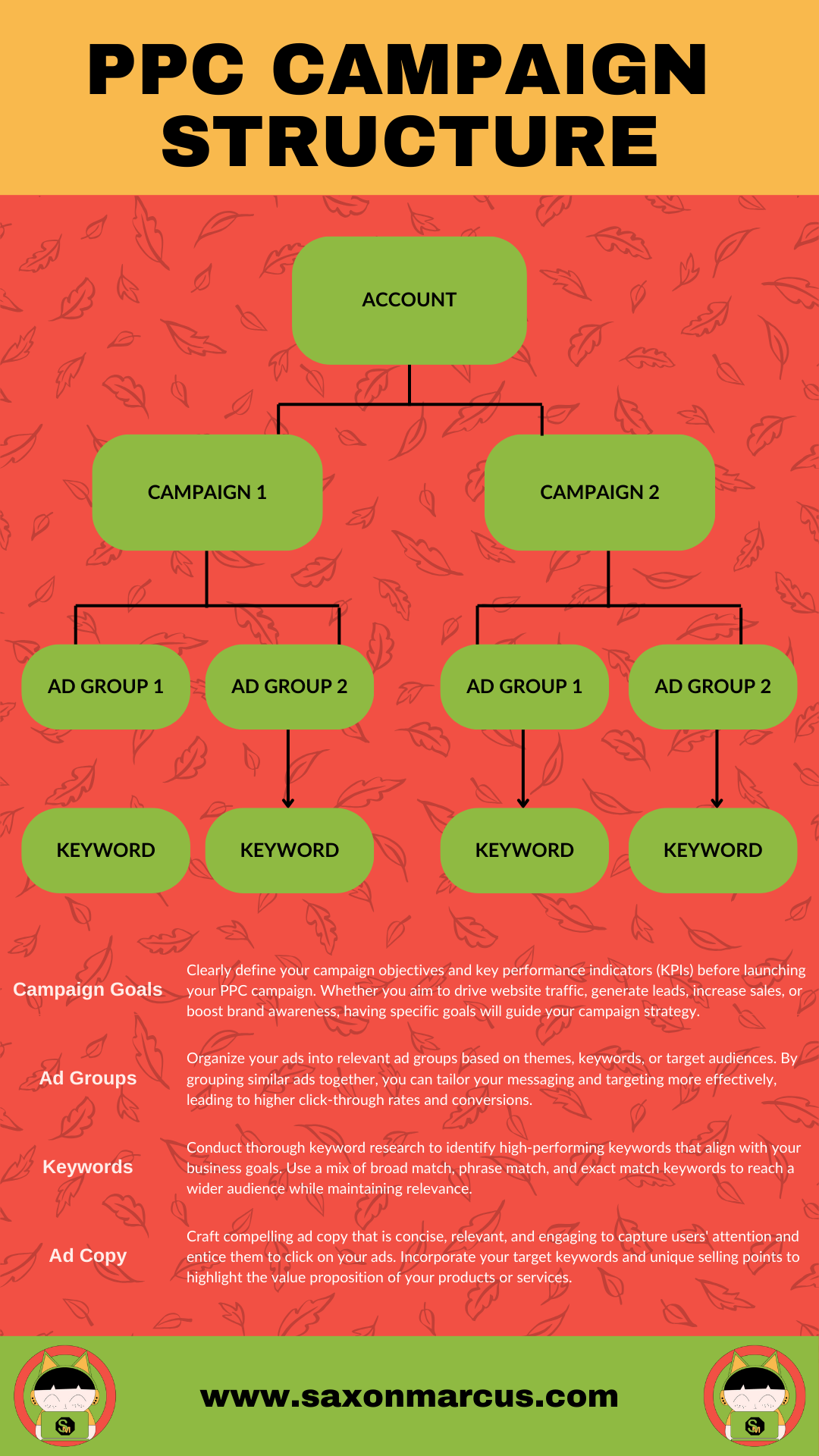
CONCLUSION
In conclusion, leveraging the power of PPC advertising can truly unlock immense business growth opportunities for your company. The ability to target specific audiences, track results in real-time, and adjust campaigns for maximum impact makes PPC a highly effective marketing strategy.
What is PPC in advertising? By investing in PPC advertising, businesses can reach a larger audience, increase brand visibility, drive targeted traffic to their website, and ultimately boost sales and conversions. The data-driven nature of PPC allows for continuous optimization, ensuring that your advertising budget is being used efficiently to achieve the best possible results.
It is essential for businesses to understand what is PPC and the importance of a well-planned PPC strategy and to continuously monitor and refine their campaigns to stay ahead of the competition. With the right approach and expertise, what is PPC advertising can be a game-changer for businesses looking to accelerate their growth and achieve their marketing goals.


